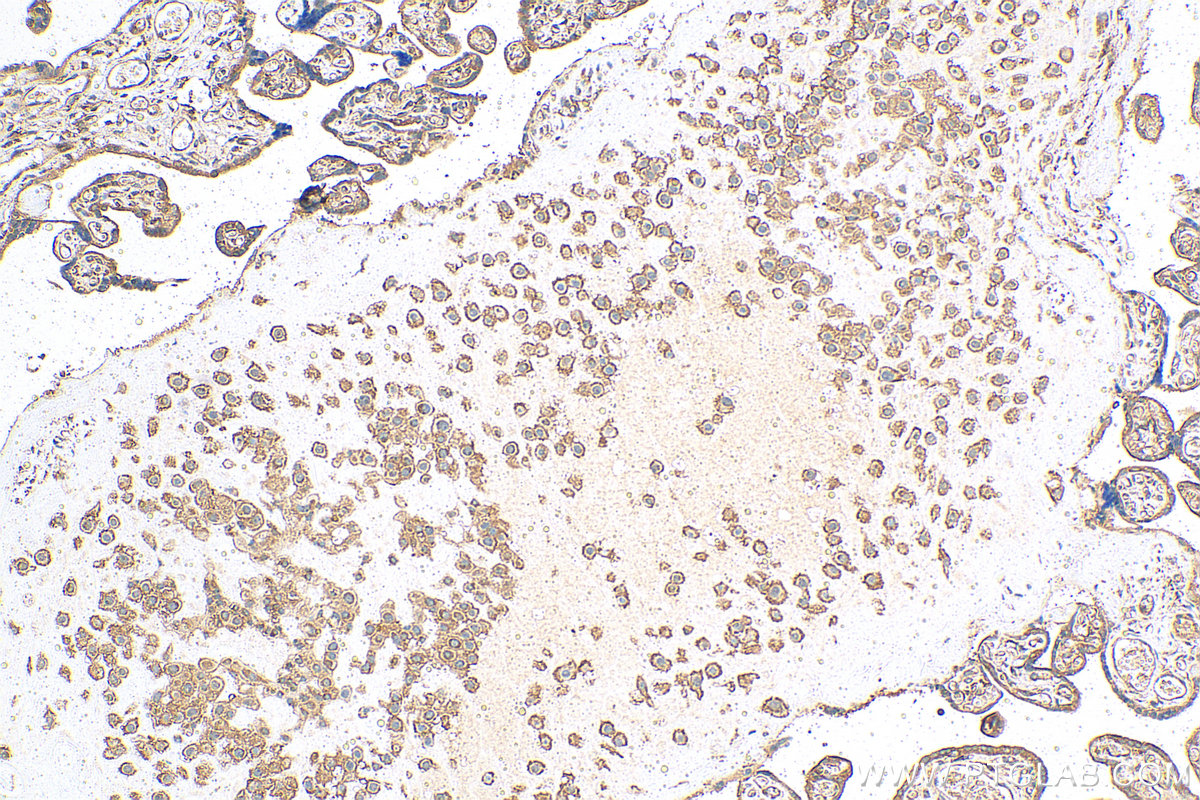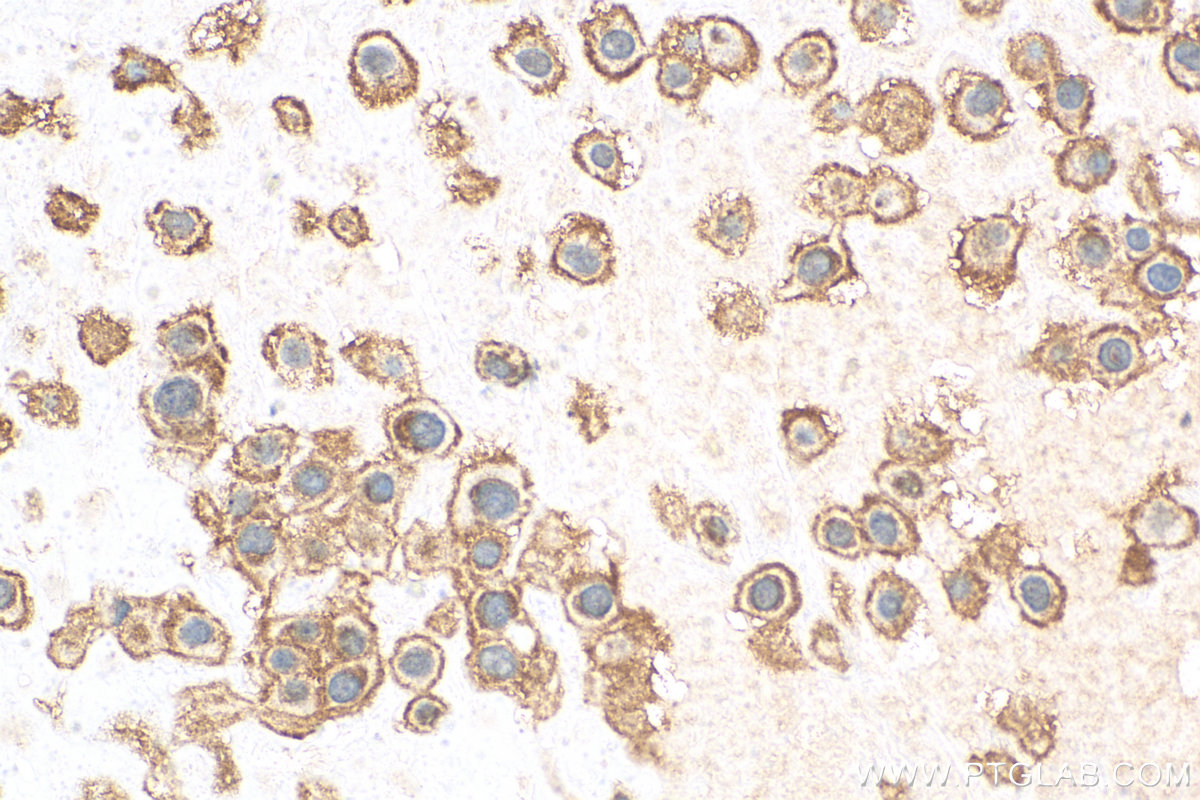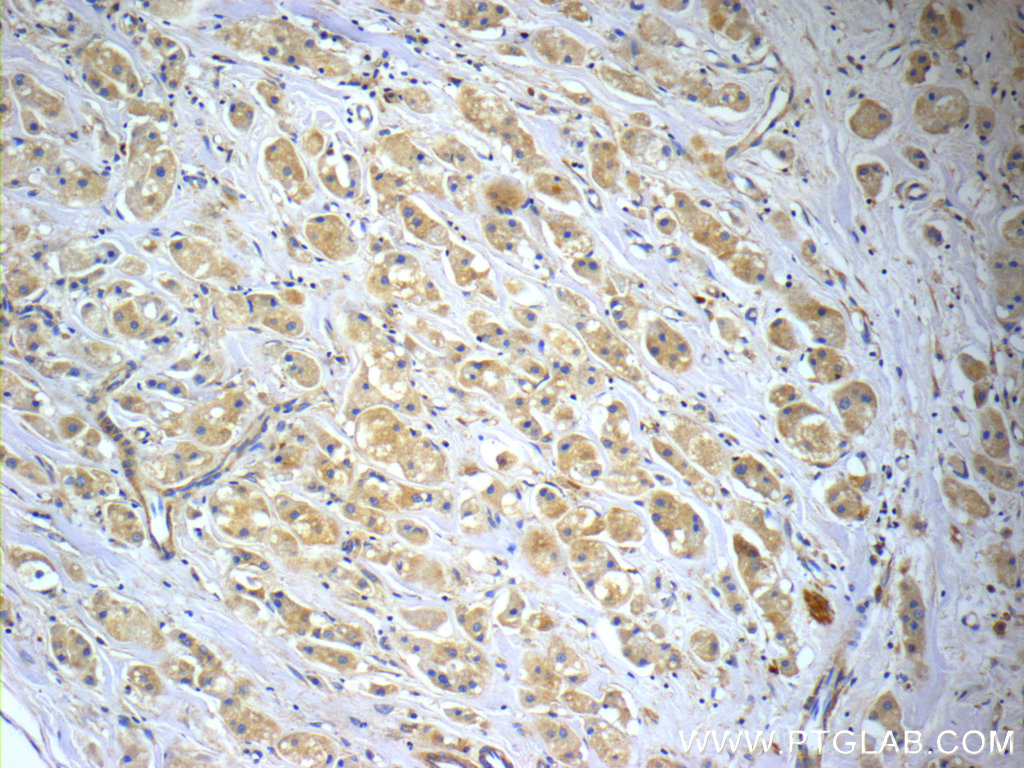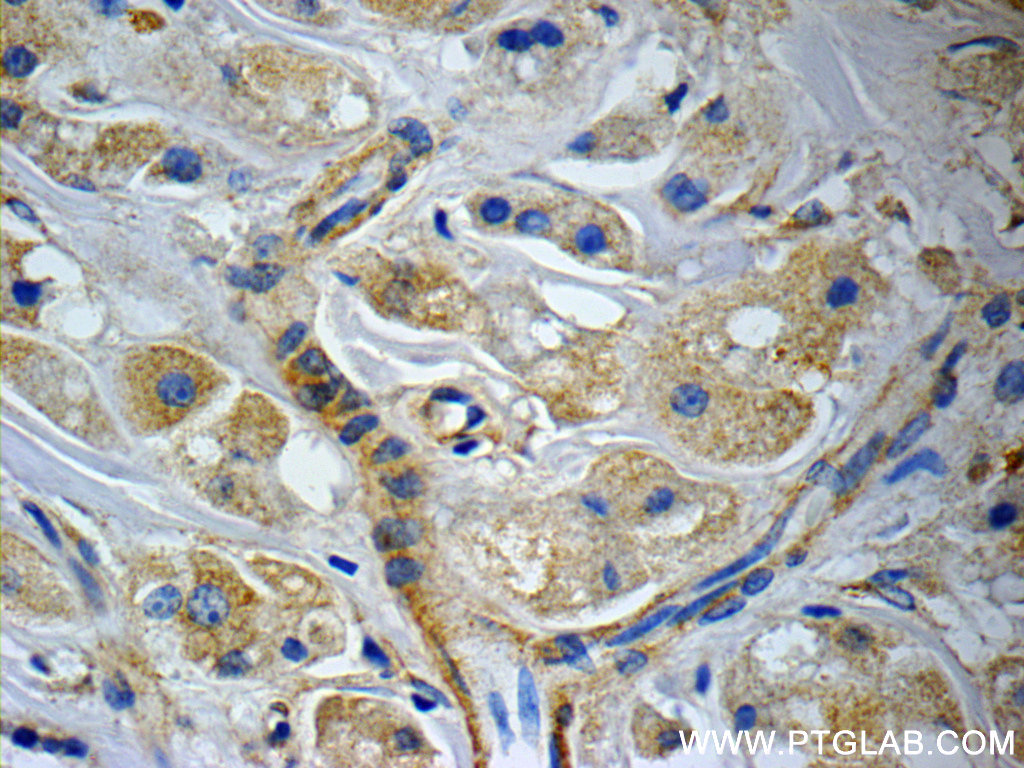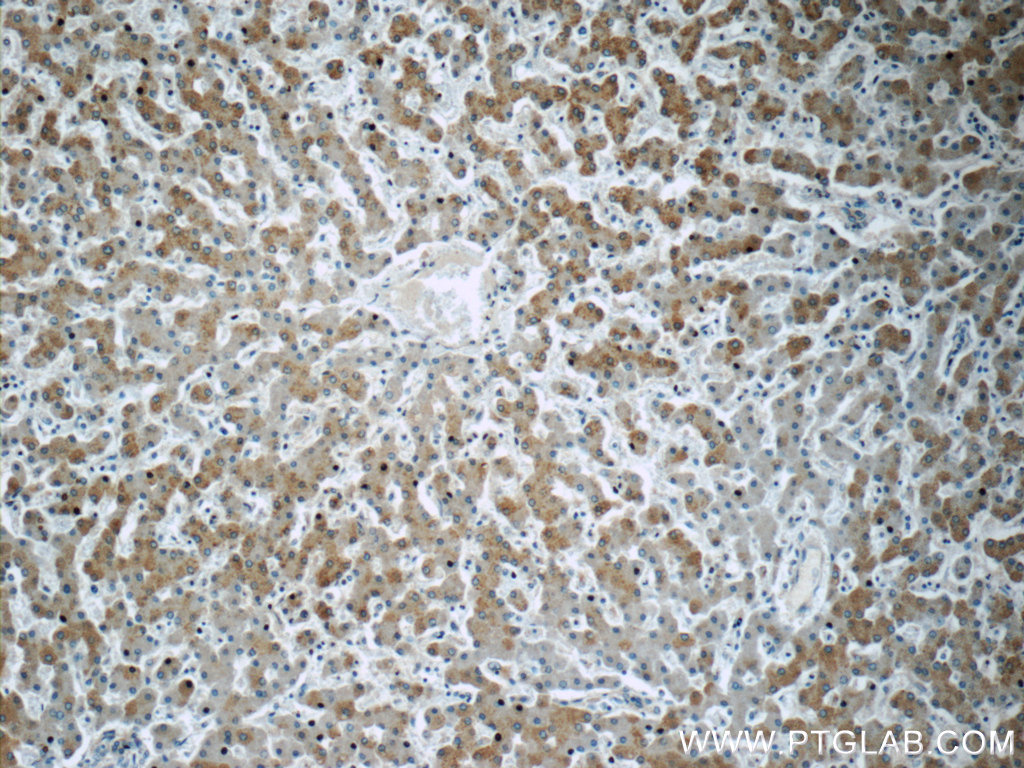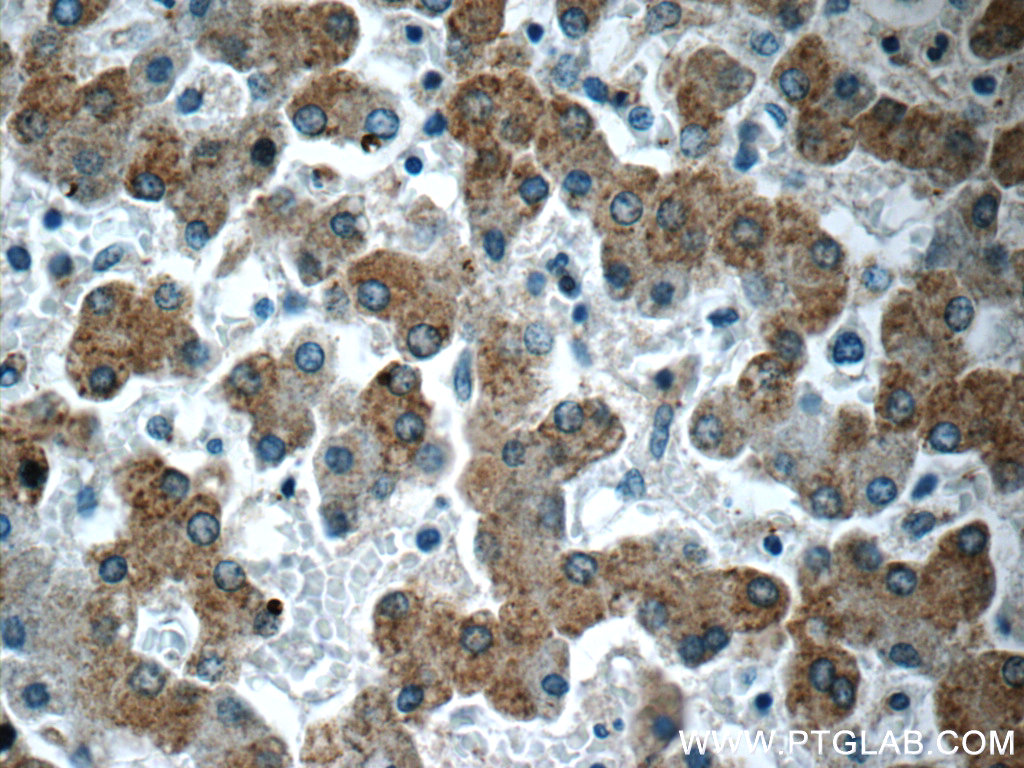验证数据展示
经过测试的应用
| Positive IHC detected in | human placenta tissue, human breast cancer tissue, human liver tissue Note: suggested antigen retrieval with TE buffer pH 9.0; (*) Alternatively, antigen retrieval may be performed with citrate buffer pH 6.0 |
推荐稀释比
| 应用 | 推荐稀释比 |
|---|---|
| Immunohistochemistry (IHC) | IHC : 1:50-1:500 |
| It is recommended that this reagent should be titrated in each testing system to obtain optimal results. | |
| Sample-dependent, Check data in validation data gallery. | |
发表文章中的应用
| WB | See 2 publications below |
产品信息
24445-1-AP targets CCDC53 in WB, IHC, ELISA applications and shows reactivity with human samples.
| 经测试应用 | IHC, ELISA Application Description |
| 文献引用应用 | WB |
| 经测试反应性 | human |
| 文献引用反应性 | human |
| 免疫原 |
CatNo: Ag19831 Product name: Recombinant human CCDC53 protein Source: e coli.-derived, PGEX-4T Tag: GST Domain: 1-194 aa of BC010889 Sequence: MDEDGLPLMGSGIDLTKVPAIQQKRTVAFLNQFVVHTVQFLNRFSTVCEEKLADLSLRIQQIETTLNILDAKLSSIPGLDDVTVEVSPLNVTSVTNGAHPEATSEQPQQSSTQDSGLQESEVSAENILTVAKDPRYARYLKMVQVGVPVMAIRNKMISEGLDPDLLERPDAPVPDGESEKTVEESSDSESSFSD 种属同源性预测 |
| 宿主/亚型 | Rabbit / IgG |
| 抗体类别 | Polyclonal |
| 产品类型 | Antibody |
| 全称 | coiled-coil domain containing 53 |
| 别名 | CCDC53, CGI 116, WASH complex subunit CCDC53, WASHC3, x0009 |
| 计算分子量 | 194 aa, 21 kDa |
| GenBank蛋白编号 | BC010889 |
| 基因名称 | CCDC53 |
| Gene ID (NCBI) | 51019 |
| RRID | AB_2879551 |
| 偶联类型 | Unconjugated |
| 形式 | Liquid |
| 纯化方式 | Antigen affinity purification |
| UNIPROT ID | Q9Y3C0 |
| 储存缓冲液 | PBS with 0.02% sodium azide and 50% glycerol, pH 7.3. |
| 储存条件 | Store at -20°C. Stable for one year after shipment. Aliquoting is unnecessary for -20oC storage. |
实验方案
| Product Specific Protocols | |
|---|---|
| IHC protocol for CCDC53 antibody 24445-1-AP | Download protocol |
| Standard Protocols | |
|---|---|
| Click here to view our Standard Protocols |
发表文章
| Species | Application | Title |
|---|---|---|
Nature Architecture of the human interactome defines protein communities and disease networks. | ||
Nat Commun A genome-wide CRISPR screen identifies host factors that regulate SARS-CoV-2 entry. |

